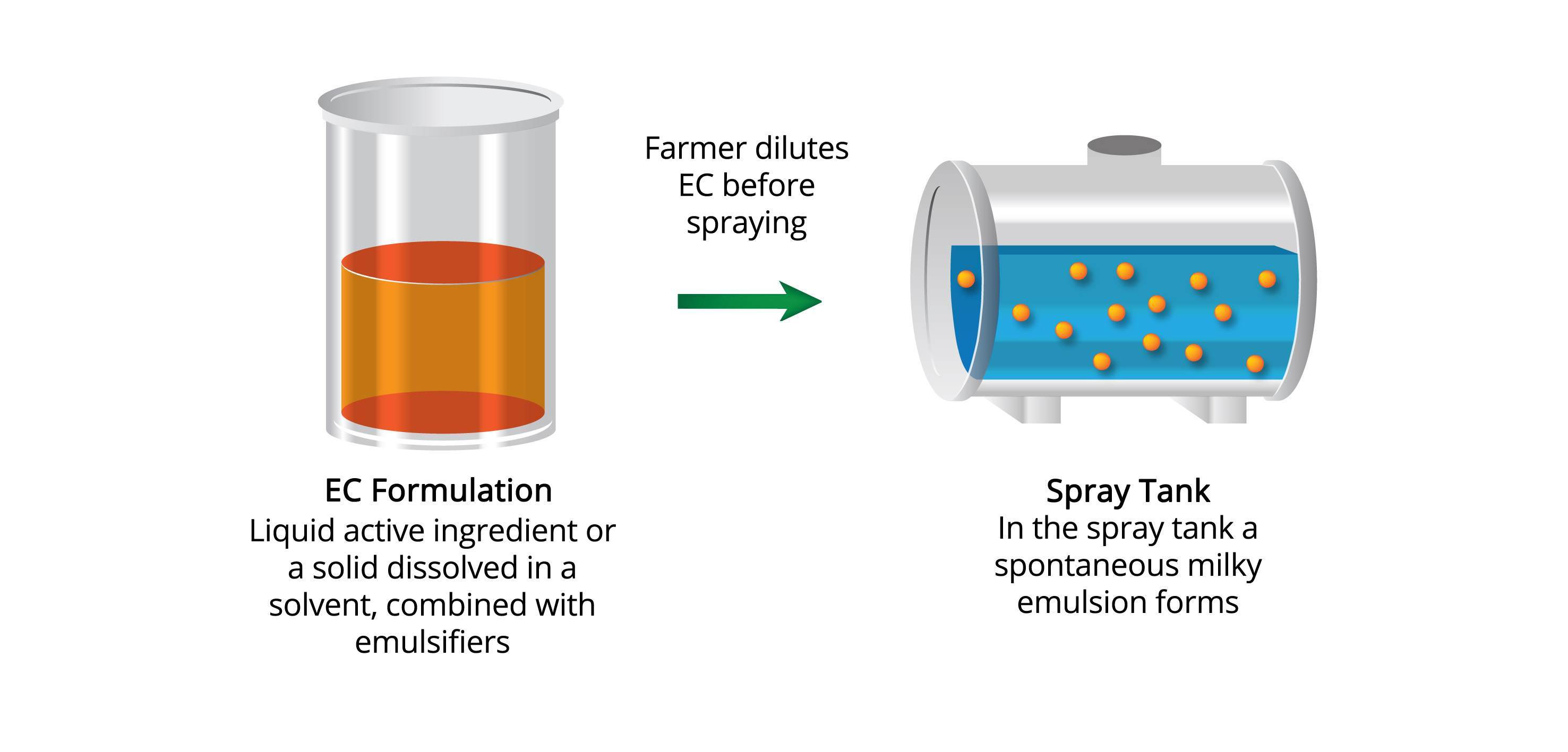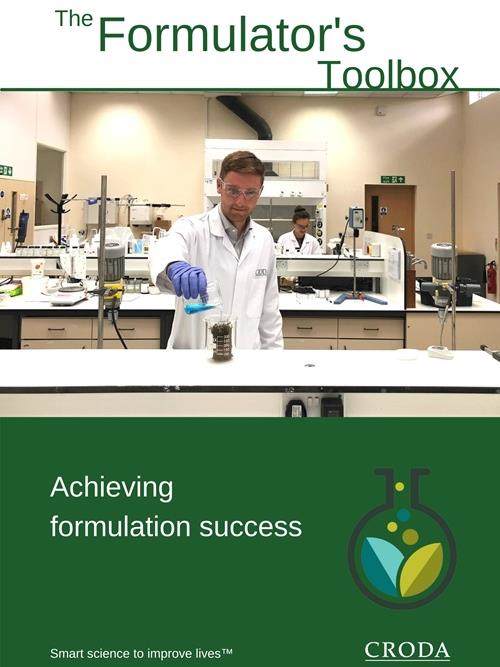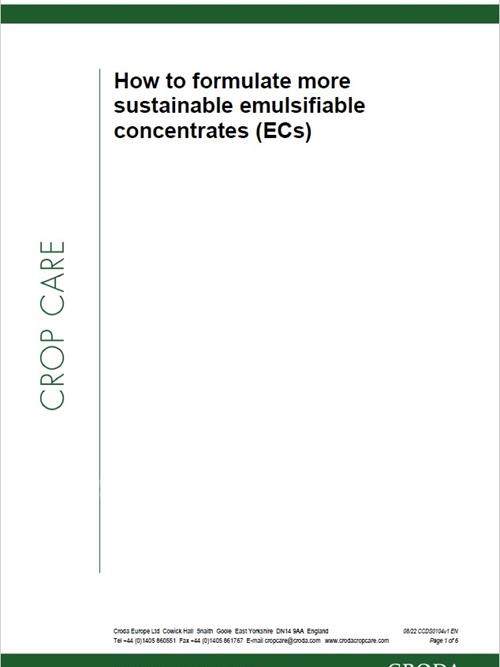
Emulsifiable concentrate (EC)
ECs are still one of the most common formulation types for crop protection products worldwide. When EC formulations are diluted with water in the spray tank they form a spontaneous emulsion, with emulsion droplets in the size range of 0.1 to 1.0μm.
The spontaneous emulsion can be achieved by selecting one or more surfactants based upon their ability to emulsify the solvent system, including the active ingredient, into water. It is by means of balancing the water soluble and oil soluble surfactant components at the water/solvent interface that a physically stable emulsion is formed. When sprayed, the dilute emulsion gives a uniform and accurate application of active ingredient on the crop, which is essential for effective pest control.
 Benefits
Benefits
- Simple to manufacture
- Relatively high biological activity
- Good chemical stability
- Spontaneous emulsification upon dilution
Limitations
- Use expensive solvents containing harmful VOCs
- Solvents may affect plastics and rubbers in spray applicators
- Active ingredients needs to be fully soluble in the solvent over a range of temperatures
- Use of water miscible solvents can cause active ingredient crystallisation problems upon dilution
Products recommended for EC
To improve the spontaneous emulsification of an EC on addition to water in the spray tank, anionic emulsifiers can be added. Due to the overall charge on an anionic emulsifier, it provides additional electrostatic stabilisation.

Atlox™ 4838B
.jpg&mn=cropcare&w=768&xr=0&yr=0&xfp=6&yfp=6&hash=03A08E2BE410ABFAB97AA35279EE7D5D19C138999FEC74AA)
Crodafos™ C10/5A
The role of a non-ionic emulsifier is to emulsify the oil when the EC formulation is diluted with water in the spray tank. It provides steric stabilisation and therefore improves stability. Non-ionic surfactants are frequently used in pairs: a low polarity partner and a high polarity partner to balance the polarity requirements of the oil phase.
.jpg&mn=cropcare&w=768&xr=0&yr=0&xfp=6&yfp=6&hash=48717E6EA80954ABD146F117F2CAC16E19C138999FEC74AA)
Atlas™ G-5002L

Tween™ 22

Tween™ 23

Tween™ 24
The role of a non-ionic emulsifier is to emulsify the oil when the EC formulation is diluted with water in the spray tank. It provides steric stabilisation and therefore improves stability. Non-ionic surfactants are frequently used in pairs: a low polarity partner and a high polarity partner to balance the polarity requirements of the oil phase.

Atlox™ 4916
In some circumstances, it is possible to use a single product. This can make formulation development easier. If these single product solutions do not work, then we recommend blending a high and low non-ionic emulsifier with an anionic emulsifier.

Atplus™ 309F-LM

Atlas™ G-1086

Atplus™ 309F-LM
In an EC formulation the active ingredient must be fully soluble in the carrier solvent. If the active ingredient is solid, it will need to be dissolved in a solvent first. Croda’s Seatons Natural Oil range are 100% natural and renewable, which make them a great choice for use in crop care formulations.

Atlox™ Solvall™ BDE-1
.jpg&mn=cropcare&w=768&xr=0&yr=0&xfp=6&yfp=6&hash=BB9E08CCA29C7EA9890679CCAB89BACB19C138999FEC74AA)
Seatons refined linseed oil

Seatons refined rapeseed oil
.jpg&mn=cropcare&w=768&xr=0&yr=0&xfp=6&yfp=6&hash=FA57C23FA84273041BD2372576E0B85719C138999FEC74AA)



